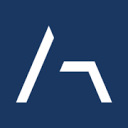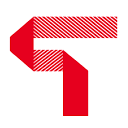
Divergent
Founded Year
2014Stage
Series E | AliveTotal Raised
$895MValuation
$0000Last Raised
$250M | 2 mos agoMosaic Score The Mosaic Score is an algorithm that measures the overall financial health and market potential of private companies.
+237 points in the past 30 days
About Divergent
Divergent specializes in digital manufacturing solutions within the automotive, aerospace, and industrial sectors. The company offers an end-to-end software-hardware production system known as the Divergent Adaptive Production System (DAPS), which enables the design, additive manufacturing, and automatic assembly of complex structures. DAPS is equipped with AI-enabled engineering software for design optimization, 3D printing with application-specific alloys, and a universal robotic assembly process that does not require design-specific tools. It was founded in 2014 and is based in Torrance, California.
Loading...
ESPs containing Divergent
The ESP matrix leverages data and analyst insight to identify and rank leading companies in a given technology landscape.
The on-demand manufacturing platforms market facilitates the on-demand production of goods by connecting businesses seeking manufacturing services with a network of manufacturing partners capable of producing custom or small-batch orders. These platforms have emerged as a solution for businesses seeking flexibility, reduced lead times, and cost-effective manufacturing options, particularly for pro…
Divergent named as Leader among 15 other companies, including Dassault Systemes, Stratasys, and Xometry.
Loading...
Expert Collections containing Divergent
Expert Collections are analyst-curated lists that highlight the companies you need to know in the most important technology spaces.
Divergent is included in 3 Expert Collections, including Unicorns- Billion Dollar Startups.
Unicorns- Billion Dollar Startups
1,309 items
Advanced Manufacturing
7,017 items
Companies in the advanced manufacturing tech space, including companies focusing on technologies across R&D, mass production, or sustainability
Artificial Intelligence (AI)
20,894 items
Divergent Patents
Divergent has filed 16 patents.
The 3 most popular patent topics include:
- 3d printing processes
- fused filament fabrication
- manufacturing

Application Date | Grant Date | Title | Related Topics | Status |
|---|---|---|---|---|
1/25/2023 | 4/8/2025 | 3D printing processes, Point-class cutters, Fused filament fabrication, Manufacturing, Metalworking | Grant |
Application Date | 1/25/2023 |
|---|---|
Grant Date | 4/8/2025 |
Title | |
Related Topics | 3D printing processes, Point-class cutters, Fused filament fabrication, Manufacturing, Metalworking |
Status | Grant |
Latest Divergent News
Nov 6, 2025
More than yet another insanely expensive toy, the Czinger 21C is the poster car for a new era of manufacturing as a service. by Freelancer Follow Link Transportation Transportation Follow Tech Follow Cars Follow The Czinger 21C is a halo car for the future military-industrial complex More than yet another insanely expensive toy, the Czinger 21C is the poster car for a new era of manufacturing as a service. by Freelancer Follow Link Share Countless cars have received military-grade marketing over the years, their performances likened to some form of ordnance or another. Saab was notorious for leaning on its aeronautical origins , and it’s hard to imagine what kind of state Jeep would be in today without literally parading its olive drab roots at every opportunity. But not since World War II’s requisitioning of automotive factories have we had such a direct crossover between a civilian machine and defense devices as we have in today’s 1,250-horsepower, $2.35-million Czinger 21C. The car’s components are formed, layer by microscopic layer, in the very same machines that spin out precision-guided munitions and uncrewed military aircraft, components designed and manufactured by Czinger’s parent company, Divergent 3D. This makes the 21C something of a halo car. But where other halo cars, like Cadillac’s $360,000 Celestiq or the dearly departed Dodge Viper, have served as aspirational machines projecting the personalities of their respective brands, the 21C is the embodiment of a new era of manufacturing as a service. As I learned in a visit to Divergent 3D and Czinger’s conjoined headquarters, this tech takes lethality to new heights. Previous Additive advancements I had a hard time knowing what to focus on when touring the manufacturing floor at Divergent 3D’s headquarters in Torrance, California. Over here sat an ornately sculpted suspension component for an unannounced hypercar. Over there, the angular body of a next-gen cruise missile. Both shared the same satin patina typical of a part made from laser sintering, the additive manufacturing technique at the core of Divergent 3D’s business, where high-power lasers melt layers of alloy dust into complex shapes. CEO Lukas Czinger gave me a tour of the combined Divergent 3D and Czinger facilities, starting with the former, which not only houses additive manufacturing machines but also a polymers lab for mixing up adhesives, milling machines for finishing parts, and even a semicircle of towering robotic arms responsible for sticking everything together. Czinger stopped by the tapered body of a cruise missile, part of the Rapidly Adaptable Affordable Cruise Missile (RAACM) system. “A system like this, made with our technology, we can develop from clean sheet of paper to fully flight-worthy airframe within about two to three months,” he says. “Usually, it would be two to three years. We’re saving, usually, about 30 to 40 percent in mass, and this structure would typically be about 200 parts. We’re taking it down to usually between four to 10.” The 21C is the embodiment of a new era of manufacturing as a service This quantum leap in manufacturing was the initial brainchild of former CEO Kevin Czinger, who founded Divergent 3D in 2014. His son Lukas left a career in investment banking to join his father, founding Czinger Vehicles in 2019. Lukas took over as Divergent 3D CEO earlier this year, with Kevin Czinger now serving as lead inventor and executive chairman. Laser sintering is hardly a novel technology in 2025. Where Divergent 3D differentiates itself is by integrating design, iteration, production, and even durability testing all in-house. Czinger says this enables much faster iteration on development. That integrated process is, today, largely built around industry-standard printers from German company SLM Solutions. These are commercial printers that anyone can buy, here running software customized for Divergent 3D’s needs to boost output. But in pursuit of performance — and to avoid increasingly complicated import / export headaches — Divergent 3D is beginning to roll out its own. The Divergent Evolutionary Printer is a towering machine designed and assembled in-house, enabling even larger prints done faster with finer details. This new printer will also enable multi-material capability, printing in aluminum like most laser sintering machines, and also bringing nickel alloys to the party for particularly high-end aerospace applications. Divergent 3D also has its own suite of tools capable of rapidly shaping parts optimized for weight and strength, a process called generative design. Bring all that together, and you have something like a one-stop shop for advanced manufacturing as a service. And what better way to flaunt your tech than by creating an ornately sculpted, 3D-printed, record-setting hypercar? Previous Drive time There is no graceful way to enter the Czinger 21C. Despite all its technology, power, and performance, I was left awkwardly shuffling and scooting my posterior into the driver’s position. You sit square in the middle of the 21C, literally front and center, a layout made famous in the McLaren F1 of the ’90s but rarely seen since. That iconic supercar set numerous speed records throughout the ’90s. In 2025, the 21C is continuing that legacy, most recently by going on a 1,000-mile road trip, visiting five racetracks in five days across California, setting new records at each. From the searingly aqua-blue driver’s seat, I had a wonderful view straight ahead, peeking between the swelling fenders that arc over the 20-inch front wheels and carbon-ceramic brakes within. Cruising through town, the wildly powerful 21C made barely any sound, relying on a combination of its three electric motors. There is no graceful way to enter the Czinger 21C With them offering some 500 horsepower, even when silent, the 21C is far from slow. But, with a press of the 21C’s Mode button, the twin-turbocharged V8 behind me fired up. Suddenly, things got a lot more interesting, with 1,250 horsepower now delivered to all four wheels. Given this car can sprint to 60mph from a standstill in less than two seconds, it didn’t take long to hit some multiple of the speed limit on the public roads where I tested the thing. Common decency had me lifting off the throttle just as the 21C felt like it was reaching its stride. And it’s a long stride. My drive was in the V Max-equipped car, a more aerodynamic shape with a top speed of 253mph. Moving through traffic in pursuit of open roads outside of town, the 21C felt a bit like a nervous thoroughbred mingling with the ponies at a birthday party. But, once the traffic subsided and the roads opened up, the 21C revealed itself as a glorious mix of effortless power and extremely sharp handling. Image: Czinger Business modeling The 21C is like nothing else on the road, raw and unrefined and, yes, more than a little weaponlike. Czinger has shipped 10 cars so far, which represents a good bit of revenue considering each one’s seven-figure price tag. But the majority of Divergent 3D’s business is in the aerospace and defense industries. And business is good, enough to earn the company a $2.3 billion valuation after a recent $290 million raise. Automotive projects are in the minority, but Divergent 3D’s list of clients is growing. Aston Martin, Bugatti, and McLaren all offer cars with the company’s sculpted hardware. For now, the 21C holds its position as the brand’s most visible product, but Czinger says that could change as his new printers raise the speed and volume stakes. “Over the next decade, we’re going to keep developing these machines to be faster and faster and faster,” Czinger says. “And I do think by then, you’ll see us doing millions of parts for high-volume vehicles for the Fords, the VWs.” But it won’t all be mass market. Czinger said they’re already pondering what the company’s next hypercar might be, and how much further they can push additive manufacturing into its very core. Follow topics and authors from this story to see more like this in your personalized homepage feed and to receive email updates. Tim Stevens Freelancer Follow Cars Follow Electric Cars Follow Tech Follow Transportation Follow
Divergent Frequently Asked Questions (FAQ)
When was Divergent founded?
Divergent was founded in 2014.
Where is Divergent's headquarters?
Divergent's headquarters is located at 19601 Hamilton Avenue, Torrance.
What is Divergent's latest funding round?
Divergent's latest funding round is Series E.
How much did Divergent raise?
Divergent raised a total of $895M.
Who are the investors of Divergent?
Investors of Divergent include Rochefort Management, Apollo Future Mobility Group, Lateralus Ventures, Bridge Bank, Hexagon and 16 more.
Who are Divergent's competitors?
Competitors of Divergent include SAEKI and 8 more.
Loading...
Compare Divergent to Competitors

Adaxis is a robotics software company that provides software solutions for designing, programming, simulating, monitoring, and controlling robotic systems, integrating additive and subtractive manufacturing methods. The company serves sectors including aerospace, energy, art and design, and research and development. It was founded in 2021 and is based in Bidart, France.

Carbon focuses on additive manufacturing and 3D printing services in the technology sector. The company provides a platform that combines photopolymer resins, design tools, and 3D printing hardware for the creation of products. Carbon serves sectors including automotive, industrial, medical technology, consumer products, and dental applications. It was founded in 2013 and is based in Redwood City, California.

Roboze specializes in industrial 3D printing technology and operates in the manufacturing sector. The company offers advanced 3D printers capable of processing high-performance super polymers and composite materials for the production of functional parts designed for extreme conditions. Roboze also provides on-demand manufacturing services through its global network, Roboze 3D Parts, which supports cost and time optimization in supply chains. It was founded in 2014 and is based in Bari, Italy.

9T Labs specializes in the manufacturing of strong, lightweight, and sustainable composite materials within various industries. The company offers an additive fusion technology solution that enables the production of structural parts with a significant reduction in weight and cost compared to metal while maintaining high performance in demanding environments. 9T Labs primarily serves sectors such as aerospace, automotive, medical, sporting goods, and education & research. It was founded in 2018 and is based in Zurich, Switzerland.

Bright Machines operates as a software and robotics company focusing on automation solutions for the manufacturing sector. The company provides automated assembly services that utilize computer vision, machine learning, and software applications for product design and manufacturing processes. Bright Machines was formerly known as AutoLab AI. It was founded in 2018 and is based in San Francisco, California.

Aon3D specializes in industrial additive manufacturing solutions and focuses on thermoplastics for various sectors. The company offers a range of 3D printers and software designed to create functional parts using advanced materials such as PEEK and ULTEM. Aon3D primarily serves the aerospace, manufacturing, and federal & military industries with its innovative 3D printing technology. It was founded in 2015 and is based in Montreal, Canada.
Loading...
